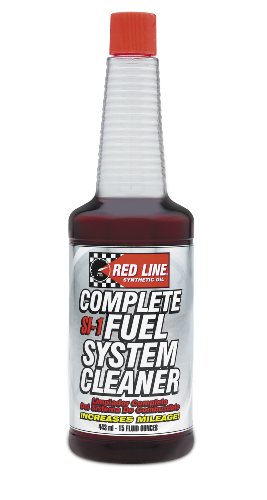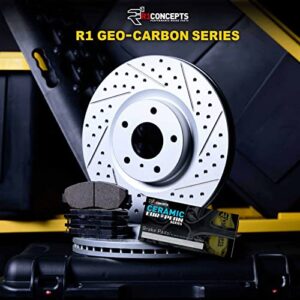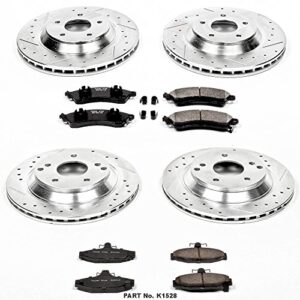FEATURED Red Line 60103 SI-1 Fuel System Cleaner – 15 oz.
- Fuel injector cleaner
- Cleans pollution control valve
- Reduces octane requirements
- Raises fuel economy
- Protects the fuel system from rust
SI-1 injector and valve detergent is a concentrated package of the most powerful high-temperature detergents available to clean gasoline fuel injectors or carburetors, intake valves and combustion chambers and can clean injectors to nearly 100 percent efficiency in one treatment. The cleansing effect on injector deposits can raise fuel economy approximately 12 percent or even greater, depending on the condition of the injectors.





Best and most cost-effective product of its type,
Short version:
Among all fuel system cleaners I’m aware of, Redline SI-1 contains the highest quantity per dollar (based on manufacturer MSDS) of the critical fuel-system-cleaning compounds known as polyether amines (PEA). Primarily for this reason I believe SI-1 to be the best available and most cost-effective fuel system cleaner product at retail pricing. […].
In my case it has not been necessary to use Redline’s recommended quantity of approximately 3 oz per fill-up. The effects of 1 oz per fill-up are indistinguishable in terms of tested results (see my basis for this statement below). This results in an approximate cost of $0.35/tank or less than a tenth of a penny per mile. A full case at this usage rate is enough to treat 180 full tanks of fuel or to last approximately 80,000 miles. (Figures based 15gal/tank, 25-35mpg).
Long version:
As far as I know, every effective fuel system cleaner on the market uses a class of compounds known as polyether amines (PEA), in varying proportions, to effectively clean deposits from fuel system components, and particularly from fuel injectors, which can quickly impact engine efficiency and performance when not operating correctly. My understanding is that these compounds were first developed by Chevron and sold under the Techron name, and have since been made available to other blenders of fuel treatment products. Until recently BG 44K, Chevron Techron Concentrate, Gumout Regane Fuel System Cleaner, Amsoil P.I. Performance Improver Concentrate, and Redline SI-1 (among others) listed polyether amines on their Material Safety Data Sheets (MSDS) in proportions varying from approximately 25% to 50%. Most of these products no longer list PEA on their MSDS, having changed their terminology to disguise the precise nature of their products’ constituent components. Whether PEA is still contained in those products is a matter of uncertainty. As of this writing Redline’s SI-1 MSDS still specifies that the product contains 30-50% PEA. Consequently it is one of the few remaining fuel system cleaner products that undoubtedly does contain PEA in significant quantity.
I have been able to test the efficacy of fuel system cleaners in one of my own vehicles using a method I stumbled on after having its injectors professionally cleaned while out of the vehicle. The car in question uses a Bosch engine management system that reports fuel injector data to an on-board computer, which then uses that data to calculate and report instantaneous and average mpg to the driver. I noted after the professional cleaning that the accuracy of the reported mpg, when used to measure average mpg over each full tank of fuel, improved suddenly from a prior error of around -3% – -5% (that is, the reported mpg was ~3-5% below the actual mpg, or typically just over 1mpg low) to an error as close to zero as I could measure (that is, usually between -1% and 1%, fluctuating above and below a perfect “match”). This can be explained on the basis that the engine management system will compensate for a dirty injector by holding the injectors open slightly longer during each combustion cycle, in order to admit the proper amount of fuel. The on-board computer interprets that as a slightly higher rate of fuel consumption, reporting a lower-than-actual mpg figure.
After several thousand miles – not long – the perfect mpg accuracy I’d noticed began to deteriorate, likely indicating that the cleaned injectors were beginning to suffer from some sort of renewed impedance to fuel flow. Out of a desire to retain near-perfect injector performance, and also out of curiosity, I started experimenting with various commercially-available fuel system cleaners and keeping records of the results at each fill-up.
Leaving out the long details, I’ll simply say here that the results were surprisingly clear and unambiguous. Each time I went several tanks without using a fuel system cleaner (usually as a result of simply forgetting to use it or not taking the trouble), the on-board computer (OBC) accuracy would deteriorate. This would fluctuate from tank to tank, of course, as a result of inevitable measurement errors, but the trend was very clear even over a small number of fill-ups. Returning to the use of a fuel system cleaner (Chevron Techron Concentrate, Gumout Regane or SI-1, all of which at the time did contain PEA), the accuracy would improve again very quickly – within 2-3 fill-ups. I began using the SI-1 exclusively seven months ago based on its apparent cost-effectiveness and since then I have reduced the quantity I use in each tank to the current 1oz per ~15gal fill-up. The results remain unambiguous. If I use this small amount of SI-1 consistently, the accuracy of the on-board computer is excellent, with an average error of below 1%, or a fraction the error rate seen when not using such a product.
Based on the above I feel I can…
Read more
Was this review helpful to you?

|Raised my gas mileage 3-4 points,
My ’06 Civic SI has about 40,000 miles on it. It had been getting around 22 mpg (mostly city driving) but even with long distance freeway driving (around 75mph) I’d only get about 23 mpg. I usually use Chevron or Shell gas. I also have used Techron fuel cleaner in the past with no results.
So I used Red Line SI-1 a few tanks ago, and my gas mileage has increased to about 26 mpg for my last few tanks. Right now I’m at 318 miles on one tank of gas, and i have one bar left on my fuel gauge (it’s digital). Prior to the Red Line the best I’d ever gotten was 312 on one tank of gas, and that was after driving the ENTIRE tank on the freeway, and driving 10 miles with no bars left on the fuel gauge. Typically I would get 250-270 miles on one tank.
I’m stoked!
I will admit that using this stuff ain’t going to do anything to help you if your injectors aren’t clogged… but if you suspect they are, this is the fuel cleaner to get!
Was this review helpful to you?

|As good a cleaner as I’ve tested,
I can echo what Glenn said in his review. I started using fi cleaners back in the early 80’s. A new Volvo 242 I had purchased new was starting to perform sluggishly. Another owner recommended a fi cleaner which I tried and it worked pretty well. Over the past 28 years I’ve tried just about everything on the market. Some worked well, others didn’t. The Red Line SI-1 works better than the others I’ve tried. The BG cleaner works well too, but at three times the cost.
Was this review helpful to you?

|